As the first UX designer at 50onRed, I got a taste of what it's like working outside the agency world and alongside a dedicated Product team.
50onRed
UX Designer
December 2013 – April 2015
Overview
I was the first UX designer to join a growing Product team at 50onRed, a digital ad platform connecting advertisers and publishers.
My Role
As a member of the product team, I worked daily with our VP of Product, my manager, copywriters, and front/back-end developers to implement new features and iterate on existing ones. I was responsible for competitive research, IA, user flows, and user interface design for our Traffic Platform and RTX products. Working closely with our development team, I was involved in our daily scrum activities, including standups, sprint planning/grooming, and retros.
Our Challenges
At every design job I’d held before 50onRed, I was a design team of one. When I joined 50onRed, I was now tasked with not only working on a product which we owned and supported, but alongside a slew of multi-disciplinary teams. Not only was this an adjustment for me, but also for those who made up the burgeoning Product team of which I was a part.
Over the next year, we’d have to learn the strengths and weaknesses each of us had within the team, and use them to our advantage to create a better product for our customers. The biggest challenge we faced during that time, however, was instituting a new way of building our product, and figuring out where design fit into that process.
To work more efficiently and predictably, our development team decided to start using Scrum. Because 50onRed was a very engineer-driven company, it was up the Product team to adapt and work with our development partners to devise a way in which product decisions were considered within the framework. At first, we tried working on design and development stories for the same feature at the same time, hoping we could sort out a cadence for collaboration organically. Unfortunately, this never happened. Almost daily, somebody was blocked by somebody else simply by virtue of working on the same stories.
It was only through our series of recurring retros that we were able to communicate and begin diagnosing the problem, eventually deciding to offset design and development sprints. While it seems like it would lead to less collaboration, product still had a seat at the table every step of the way, and we were able to look to our development teams for insight on new product features, while our development teams were able to consult us while implementing them.
While our solution seems straight-forward in retrospect, we faced many challenges throughout the journey. I’ve used the learnings from my experiences with Scrum at 50onRed countless times in subsequent projects that use the framework, including my time at Think Company working on Xfinity Mobile and Comcast.
